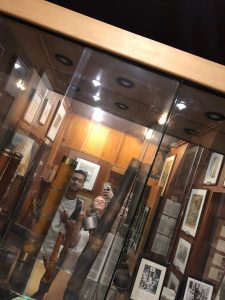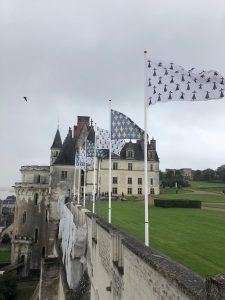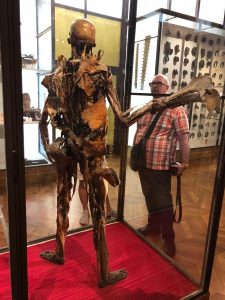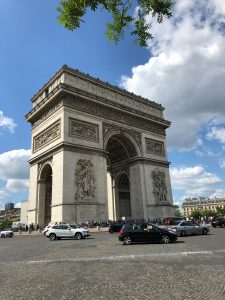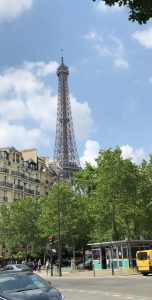We spent a day in the Loire Valley and visited two castles: Château d’Amboise and Château de Chenonceau. Dr. Easterling was wrong: Versailles is not the most beautiful place in the world, the Loire Valley is (Keith Easterling, personal communication, June 1, 2018).
The Château d’Amboise is a grand castle and an example of Gothic and Renaissance architecture. I would not expect to find a similar castle in the U.S. because the U.S. has never had a king to build a royal château. We had a very cool tour guide inside the royal mansion. She explained to us the history of France in an approachable manner.
Then I went to see Leonardo de Vinci, who is allegedly resting in the chapel of the château. I thought he was a pure Italian printer, but in reality he spent his final years in Amboise with his best friend, the king, François I. François I was not by Leonardo de Vinci’s side when he died, even though there is a painting of François I holding de Vinci’s hand at his last moment. It was only propaganda to make the royal family more likable (the people like Leonard de Vinci). As the tour guide instructed us, we have to be able to identify the “fake news.”
Later we went to Château de Chenonceau, which was built on a river. The château is not as big as the Château d’Amboise, but the fact that it spans the Cher river (a tributary of the Loire river) makes it magnificent in its own way.
At Château de Chenonceau, we met a children choir group that performed in the château. Their voice is just as beautiful as the rest of the château. There are a considerable amount of beautiful tapestries in the display. I am going to get a tapestry. I will probably never live in château, but at least I can make my wall looks like a wall in the château.
One other perk of living in the Château de Chenonceau is that you can enjoy the soothing sound of the flowing Cher river. Soothing sounds, such as natural white noise including the sound of raining and water flowing, have benefits. For example, Farokhnezhad Afshar, Bahramnezhad, Asgari, and Shiri (2016) found that white noise is useful in “masking environmental noises, improving sleep, and maintaining sleep in the coronary care unit.” Rausch, Bauch, and Bunzeck (2013) found that white noise has a beneficial effect on learning that depends on dopaminergic neuromodulation.
Reference
Farokhnezhad Afshar, P., Bahramnezhad, F., Asgari, P., & Shiri, M. (2016). Effect of White Noise on Sleep in Patients Admitted to a Coronary Care. Journal of Caring Sciences, 5(2), 103–109. https://doi.org/10.15171/jcs.2016.011
Rausch, V. H., Bauch, E. M., & Bunzeck, N. (2013). White Noise Improves Learning by Modulating Activity in Dopaminergic Midbrain Regions and Right Superior Temporal Sulcus. Journal of Cognitive Neuroscience, 26(7), 1469–1480. https://doi.org/10.1162/jocn_a_00537
